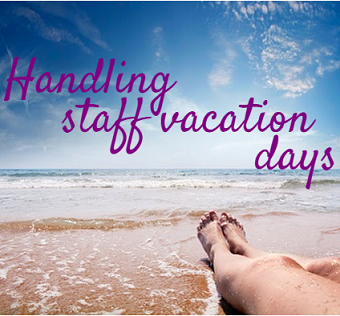
The holiday period is almost here and employees who have been working hard through the months are anticipating taking their vacation. Great news for you, the owner or manager, because you know that the time off actually helps boost productivity and satisfaction when employees return to work.
The bad news, however, is that not only do employees expect vacation requests to be approved in a timely manner, but they also want their days to be approved over and above those of other colleagues. Furthermore, you as HR or the manager need to ensure that essential tasks need to be reassigned so that work continues smoothly without interruption.
Here are some pointers to keep in mind to manage employee absence without workflow coming to a standstill:
Choose a fair approval procedure
When your company is deciding which vacation approval procedure to elect, be sure it is a strategic and consistent and most of all, fair. While the Netherlands has some of the fewest public holidays across countries worldwide, every Dutch employee is nonetheless entitled to leave with full pay. Your employees may all have vacation, personal, and sick days, in addition to different leave schemes offered to employees in the Netherlands. They also have different levels of seniority and accrued time that all directly affect vacation requests and potential callouts. You should consider all these factors and try to understand which employees are likely to take time off (those with seniority and accrued time) and which ones are likely to stay and help man the fort (new employees with less time accrued).
If you can give everyone their first request, great. If not, approve their second, and so on. It may be easier to approve requests on a “first come, first served” basis. The most important thing is to make sure the procedure you chose is consistent and fair. It is much easier to get employee buy-in when they perceive the policy as equitable and also reduces the company’s potential for liability. Once you’ve finalised the procedure for vacation/PTO, you can begin planning for requests and communicating your policy to employees.
Allot enough time to approve vacation requests
It is important to be very clear with employees about when vacation requests are due so that you have enough time to anticipate how absences might affect production schedules and project delivery dates. Some companies require employees to submit their requests at the beginning of the calendar year while others are more lenient. Whichever approach you take, be sure to give yourself time to resolve conflicts (like two employees requesting the same days) and also give employees enough time to potentially adjust their plans.
Communicate your Vacation/PTO policy
While vacation and PTO policies are usually covered during orientation, it is always good to remind employees of the specifics like how date conflicts will be resolved, any periods that are “blackout dates” when employees are required to work, and of course the time when requests are due. Let employees know that you are aware they want time off and you want to avoid “call outs” and make sure everyone gets their time off. You can send out an email or make an announcement at a company meeting – just be sure everyone is aware of the policy and generally onboard. Get feedback from employees and encourage them to work with each other to switch shifts or cover tasks to help resolve scheduling disputes.
Prepare for absences
As a general rule, it is always good to consider vacation, sick leave and other kinds of employee absences when you are planning your staffing levels. Ask yourself, “Who can take over in this person’s absence?” The best person is typically a coworker from the same department but always remember to consider the coworker’s existing workload so they are not overwhelmed. It may be wise to parcel out work to colleagues or hire a temporary worker to handle the less critical work until the fulltime employee returns. It is also a good idea to always have a backup roster prepared for the high traffic times, as callouts will happen and you will want to be prepared. Find out which employees are willing to work overtime and have all employees (full-time and temporary) on alert, letting them know they may be called last minute and you will need a quick response.
Lastly, have your employees create a to-do list of their tasks before they leave for vacation, making special notes about project procedures and deadlines. All of their clients should be informed of their absence in advance and emails should be automatically forwarded to their manager and covering colleague.
Make work an enjoyable place during the summer
This is where you get the chance to really showcase your creativity as a manager and build employee morale at the toughest time to do so. Start by forecasting which times of the summer will be the busiest, and plan to provide incentives for employees that work during peak periods. Incentives need not be grand or expensive; you can pick up ice cream for the team on the way back from lunch or allow them casual Fridays (or any day) to give them a break from stiff professional clothes in the hot summer months. You can even plan events just for the summer, like employee lunches, beer Fridays after work, or simply change the office décor to something more relaxing like lounge chairs, opening shades on the windows, and hanging pictures in common workspaces.
Be upfront and transparent with employees about your policy as they will be more willing to show up for work and set aside sun and fun to work when you need them.
By Jeffrey Grimes. Jr
